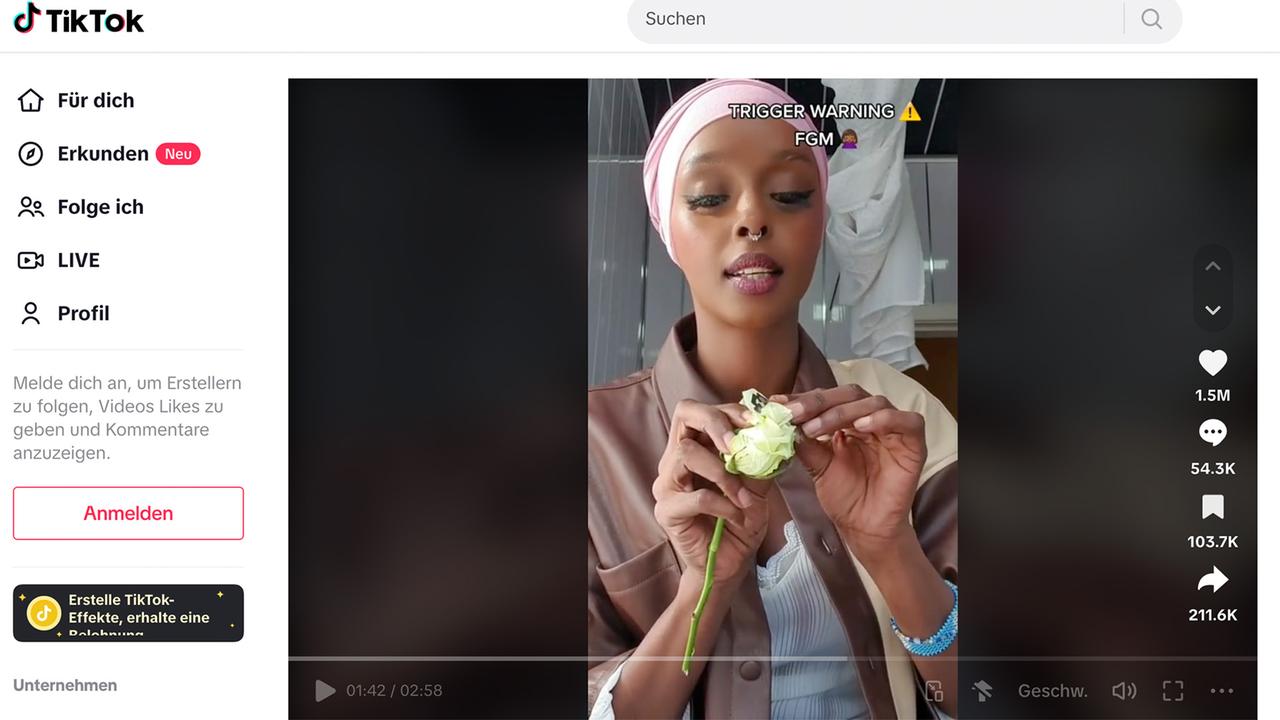According to UNICEF, there are around 230 million girls and women worldwide who have been victims of genital mutilation. This is still practiced in many African countries today. A TikToker draws attention to this.
Shamsa Araweeloo holds a white rose in one hand and a razor blade in the other hand. In her TikTok video, which has been viewed almost twelve million times, the young woman shows how female genital mutilation is carried out: She first cuts out the innermost flowers, symbolizing the clitoris. She then cuts off the larger flowers to mark the inner and outer labia. Finally, the young woman sews the cut rose petal closed with black thread.
Shamsa, who now lives in the UK, was born in Somalia in 1993. As a little girl, aged six, her gender was mutilated. It happened in her grandma's house – without anesthesia, without painkillers. She says that she also had to watch her then five-year-old cousin and her seven-year-old sister being circumcised by a woman. A trauma, Shamsa remembers.
My whole body was in shock. They had first tied my legs and stuffed a piece of cloth in my mouth so that I would stop screaming, calling for help, begging. They didn't want to hear that. I can't describe in words what it feels like to be sewn up like that as a human being. Especially not as a child.
Shamsa still feels this deep-seated pain to this day. As a child, she was very afraid after the genital mutilation and no longer trusted her grandmother. The young woman says her mother was against it at the time – from her own experience. But she was unable to assert herself against the deeply rooted tradition.
Affected girls are getting younger and younger
Nothing has changed in Somalia in the past 30 years, says Nankali Maksud of UNICEF, the United Nations children's agency. Nevertheless, there is a positive development on the African continent. “The good news is that overall there is less female genital mutilation in Africa today. But it still happens.”
In addition to Somalia, female genital mutilation is also practiced in parts of Kenya, Tanzania and Ethiopia. Even if it is forbidden by law.
In addition, years ago girls were circumcised at the age of eleven, twelve or 13 before they got their period. Thanks to international aid programs, they are now often more enlightened, educated and self-confident. This is why girls are being subjected to genital mutilation at an increasingly early age when they are not yet able to express themselves, says the UNICEF expert.
“We find that it is sometimes done in babies,” she reports. “So we need to work more with pregnant women and young mothers so that these young mothers are aware of the decisions they are making for their daughters.”
Focus on education
But it's not just women who make the decisions. Men are very important, says Shamsa. She accuses brothers, fathers and grandfathers: “It was and is they who openly speak out in favor of female genital mutilation. They are the ones who say that they will not marry a woman who has not been circumcised.”
For Shamsa, there is only one weapon against female genital mutilation – education. More education for girls, for mothers and also for men.
Karin Bensch, ARD Nairobi, tagesschau, September 20, 2024 2:27 p.m





